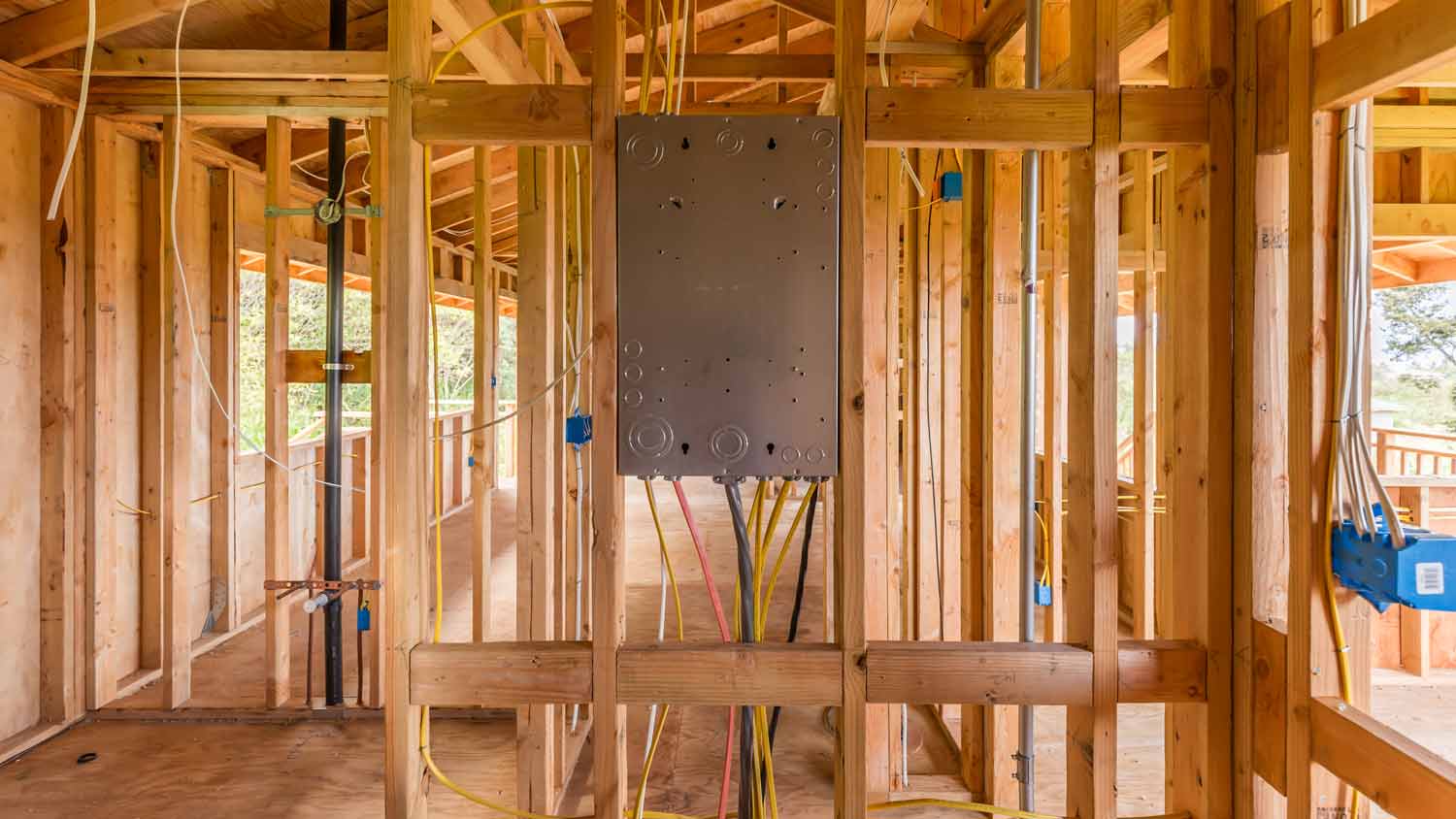What Do GFCI Electrical Outlet Buttons Do?
GFCIs, or Ground Fault Circuit Interrupters, have a “test” button and a “reset” button to test or reactivate the circuit breaker


Ah, the age-old question: what does this button do? For your outlets, the answer has to do with testing and resetting electrical currents. More often than not, the buttons indicate a GFCI outlet, which can help prevent electrical shocks.
What is a GFCI Outlet?
A GFCI outlet, or Ground Fault Circuit Interrupter, monitors your home’s electrical currents for irregularities between the hot and neutral wires. If one gets detected, the GFCI breaks the circuit to prevent electrical shock hazards from power surges. This may also cause other outlets down the circuit to lose power, while those coming before the break often stay active.
"The GFCI outlet, one of the most routinely replaced items in your home, may seem to be a nuisance," Salvatore Cutrona, Expert Review Member and Licensed Master Electrician, said. "But in reality, when these buttons aren't working, it can indicate it's time to replace it."
Using the Test Button
Because the GFCI outlet needs testing at least once per year, most have a “test” button. Pressing it will break the circuit, letting you know it’s working properly. The circuit is then restored by pressing the “reset” button. Both are typically labeled accordingly.
If, when testing the system, the circuit does not break as it should, the GFCI may require replacement. This project calls for an electrician, since most electrical work does not make a safe DIY.
How to Reset a GFCI Breaker
A GFCI outlet has a “reset” button, usually labeled as such, that makes it easy to reset the circuit breaker. You can reset a GFCI breaker by simply pressing the “reset” button on the outlet, and the circuit should be active again.
I Accidentally Pressed the Test Button on an Outlet—Now What?
No worries! Hit the “reset” button and the outlet should be back to normal. While we’re here, let’s reinforce the point that you should test your GFCIs at least once per year. Press the “test” button to trip the circuit breaker. Then, hit “reset” to restore the electrical current. This will tell you whether the GFCI is working as it should.
Why Does My Hair Dryer Have a Reset Button?
All modern hair dryers have an Appliance Leakage Circuit Interrupter, or ALCI. These get put on to prevent electrical shocks if the appliances get suddenly submerged in water (e.g., a full sink or bathtub). Since GFCIs often aren’t quick enough to halt the electrical current, ALCIs act as an extra safety measure.
What to Do When the Reset Button on an Outlet Won’t Stay In
If the reset button on an outlet pops out and won’t stay in, this indicates that your GFCI outlet has gone bad. The same goes if the button won’t go back in after popping out. Contact a local electrical repair technician for assistance.
How to Reset an Outlet Without a Button
More than likely, not all outlets in your home will have a test button or reset button. Outlets with reset buttons are usually only in bathrooms, kitchens, unfinished basements, garages, outdoors, and laundry rooms, where outlets have a greater chance of coming in contact with liquid.
That said, if you reset the circuit breaker via the breaker box and still find a dead outlet, there isn’t a way to reset it without a button. Instead, check all your GFCIs throughout your home. If one got tripped, it would likely cut off all other outlets down the circuit line. Resetting it would restore the electrical current for all affected outlets.
When to Hire an Electrician
If your GFCI circuit breaker keeps tripping, this could mean that the outlet needs replacing. However, it’s also possible that there’s an electrical threat hiding in your walls. Seeing sparks in the electrical outlet often indicates the latter. Either way, the situation calls for the expertise of an emergency electrician near you.
Before you hire an electrician, there are a few things you should check. Ensure that they are licensed, bonded, and insured before signing a contract. They should also offer a warranty in case the outlet (or electrical wiring) goes bad again.



.jpg?impolicy=leadImage)

- Home Generator Repair
- Lamp Repair
- Electric Repair
- Generator Installation
- TV Antenna Services
- Emergency Electricians
- Commercial Electricians
- Attic Fan Installation
- Attic Fan Repair
- Exhaust Fan Installation
- Electric Inspectors
- Subcontractors
- Electrical Construction
- EV Charger Installer
- Chandelier Installation
- Doorbell Installation
- Bathroom Fan Installation
- Ring Installers
- Electrical Panel Upgrade
- How to Reset an Outlet Without a Reset Button
- 4 Ways to Fix Bathroom Outlets That Are Not Working
- What Is a GFCI Outlet and How Does It Work?
- GFCI Breaker vs. Outlet: What’s the Difference?
- How to Fix an Outlet That Stopped Working When the Breaker Has Not Tripped
- Everything You Need to Know About the Types of GFCI Outlets
- Does a GFCI Outlet Need to be Grounded?
- Outlets Not Working in One Room? Here’s How to Solve
- Is a Dead Outlet Dangerous? What You Need to Know
- Why Is My Outlet Hot?
















